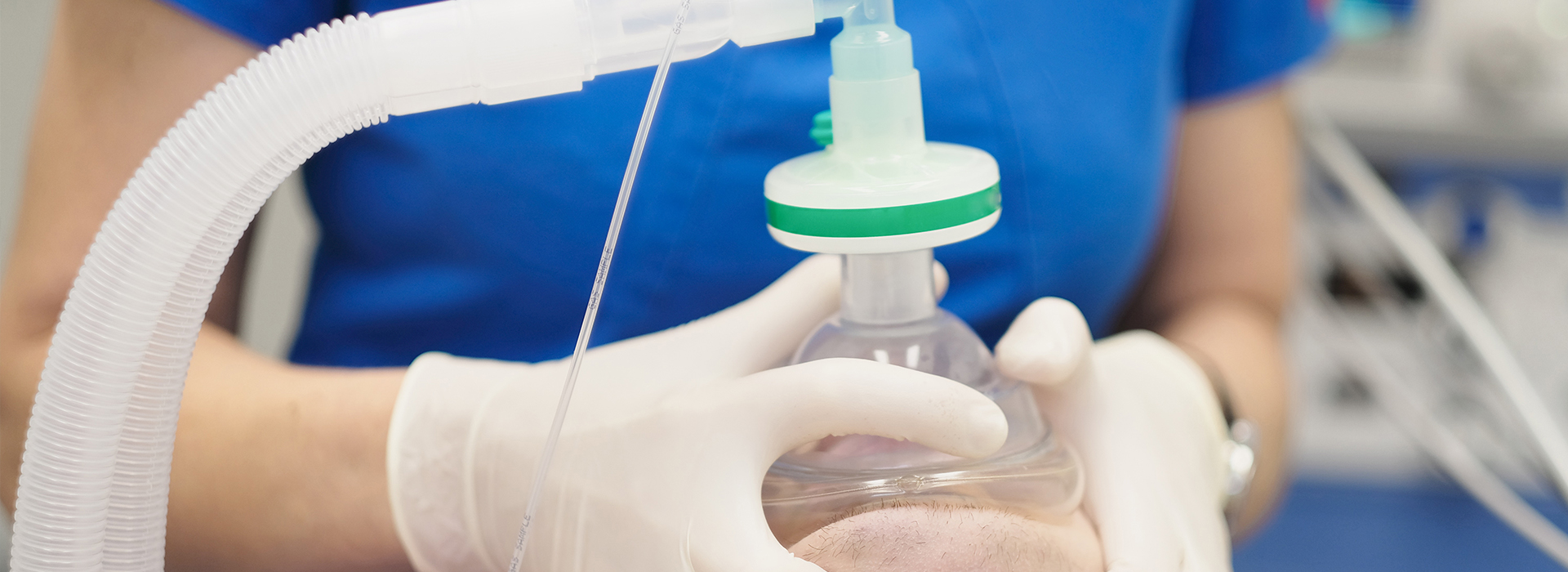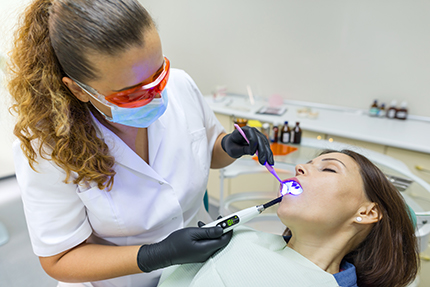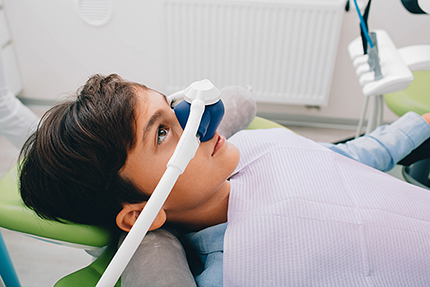Call Today
(908) 852-3693

Many people avoid the dentist because of fear, nervousness, or uncomfortable past experiences. If anxiety keeps you from getting routine care or from completing necessary treatment, there’s a reliable solution that can help you feel calm and supported throughout your visit. At the office of Dr. Anthony Iuvone, DMD, we provide safe, evidence-based sedation options that allow patients to receive the dental care they need with confidence and minimal stress.
Sedation dentistry is not a single treatment but a spectrum of techniques that reduce anxiety and improve comfort. Depending on your health history and the procedure planned, sedation can make a long appointment feel short, ease a strong gag reflex, or simply remove the emotional barrier that prevents people from getting regular care. The goal is straightforward: make dental treatment manageable so you can maintain a healthy mouth without fear.
Choosing sedation is a partnership between you and your dental team. We begin with a careful review of medical history and a conversation about your concerns and treatment goals. That information guides a personalized plan designed to keep you safe, comfortable, and informed at every step — from the moment you arrive until you are ready to go home.
Whether you’re scheduling a routine visit after a long hiatus or preparing for more extensive restorative work, sedation can be a practical part of your care plan. Our approach focuses on predictable outcomes, respectful communication, and clinical oversight to ensure your experience is as relaxed and positive as possible.
Sedation helps patients regain a sense of control during dental care by lowering anxiety and making sensory input less intrusive. For many people, the sounds, smells, and sensations of a dental office trigger an exaggerated stress response. Sedation shifts the body’s reaction so you stay comfortable and can tolerate treatment without the adrenaline and tension that otherwise interfere with care.
Importantly, sedation works alongside local anesthetics to manage both the emotional and physical components of dental procedures. While local anesthetic blocks pain at the treatment site, sedation addresses the nervous system’s response so you’re relaxed and better able to cooperate with the care plan. This combination improves safety, efficiency, and overall patient experience.
Another practical benefit is time management: sedation can make it possible to complete multiple procedures in a single visit when clinically appropriate. That reduces the number of appointments needed and helps patients who have difficulty returning for repeated visits finish necessary treatment sooner.

People seek sedation dentistry for many reasons, but the benefits are consistent: improved comfort, reduced stress, and a safer environment for delivering care. Some patients have an intense fear of dental procedures that prevents routine care; sedation allows them to break that cycle and get preventive or restorative treatment with less emotional cost.
Others find specific procedures difficult to tolerate — lengthy restorative appointments, complex surgical work, or treatments that require precise stillness. Sedation eases the strain of extended time in the chair and helps clinicians work more efficiently while keeping patient well-being central.
Sedation is also valuable for patients with physiological challenges such as a pronounced gag reflex, heightened oral sensitivity, or conditions that make it hard to remain still. Additionally, people with certain cognitive or developmental disabilities may benefit from sedation to enable safe, thorough care that would be difficult without it.
Every sedation decision begins with a tailored consultation. We review your general health, past anesthesia experiences, current medications, and any chronic conditions to determine which approach is safest and most effective. This conversation is an essential step in creating a plan that fits your needs.
Before the appointment, you’ll receive clear instructions about fasting, arrival time, and whether an escort is required. During the visit, our team monitors vital signs and comfort levels throughout the procedure. We prioritize communication so you understand each phase of care and feel reassured by how your treatment is being managed.
Aftercare is part of the plan: some forms of sedation require a brief recovery period in the office and a responsible adult to accompany you home. We provide specific guidance on activity, diet, and medication after sedation so recovery is smooth and safe.

Sedation exists along a continuum, from mild anxiolysis to deeper levels that approach sleep. Deciding which option is appropriate depends on the complexity of the dental work, the patient’s medical profile, and their comfort goals. Our priority is to select the lowest level of sedation that achieves the necessary calm and cooperation for safe treatment.
There’s an important distinction between conscious sedation and general anesthesia. Conscious sedation leaves you relaxed and often drowsy, but still able to respond to simple verbal cues. It’s suitable for many routine and moderate procedures because it preserves spontaneous breathing and cardiovascular stability while reducing anxiety and awareness of the procedure.
General anesthesia produces a deeper, unconscious state and is typically administered in a hospital setting by an anesthesiologist for patients who cannot tolerate dental care otherwise. In contrast, most dental sedation performed in-office aims for comfort with safety and responsiveness, so general anesthesia is reserved for a narrowly defined set of clinical situations.
Within conscious sedation there are several commonly used methods, each with strengths depending on the patient and the procedure. Nitrous oxide (inhaled “laughing gas”) provides rapid, mild sedation that wears off quickly and is often used for short visits. Oral sedatives are taken before the appointment and produce deeper relaxation, usually requiring an escort home. Intravenous (IV) sedation offers precise, adjustable control and is chosen when a more predictable level of sedation is needed for longer or more complex treatments.
Your dental team will explain which option best balances comfort and safety for your situation, including preparation and recovery steps you’ll need to follow for a successful outcome.
Preparation helps ensure a safe, uneventful sedation experience. We’ll review which medications you should continue or pause, how long to fast if necessary, and whether you need an escort. Clear instructions reduce confusion on the day of treatment and support a smoother recovery afterward.
After the procedure, patients are monitored until they reach an appropriate level of wakefulness and stability. Most people feel groggy for a short time and benefit from a calm environment and light activity for the remainder of the day. Written aftercare instructions are provided so you know what to expect and where to seek help if questions arise.
We place a high value on follow-up and will confirm that healing is progressing as expected. If additional appointments are needed, sedation can often be incorporated into future visits to minimize discomfort and make continued care more accessible.
Sedation dentistry is a practical, compassionate option for patients who want to move past fear and receive high-quality dental care in a safe, controlled setting. If anxiety has kept you from treatment or if you anticipate a procedure that may be difficult to tolerate, our team is available to explain the choices and create a plan that respects your comfort and health. Contact us to learn more about how sedation could make your next dental visit easier and more productive.
Sedation dentistry offers patients with general anxiety or fears about a dental procedure the opportunity to have a more comfortable and stress-free experience. By utilizing safe and controlled sedation techniques, the patient is eased into a state of complete relaxation before the procedure. This approach eliminates discomfort, pain, and preoperative anxiety, and typically makes patients feel more at ease post-operatively, as they have little or no memory of the actual moment-to-moment procedure.
Local anesthesia involves an injection directly into or close to the area where a procedure is being performed. While it eliminates any sensation of pain in the targeted area, it does not affect your state of mind or level of anxiety. When a patient receives sedation, additional medications to ease anxiety and promote relaxation are employed in advance of local anesthesia. In this way, both the stress and discomfort associated with a procedure are eliminated. Sedation can be administered in a variety of forms based upon patient needs and the recommendations of the dentist or dental anesthesiologist.
Choosing the most appropriate method of sedation for a procedure depends on a variety of factors such as a patient's medical history and their level of anxiety. Dental sedation can come in the form of nitrous oxide sedation, oral conscious sedation, and IV sedation. Certain patients receiving comprehensive treatment or undergoing a complex surgical procedure may require general anesthesia in a hospital setting.
Nitrous oxide, or "laughing gas," is a mild sedative, which is inhaled through a small mask over the nose. A standard in dental sedation for decades, the effects of nitrous oxide are almost immediate and wear off quickly once your procedure is completed.
Oral sedation involves the prescription of an oral medication prior to your appointment. Taken at the recommended time before your visit, oral sedation allows you to feel fully relaxed by the time you're ready for your procedure. With oral sedation, it's necessary to plan on having an escort to and from your dentist's office.
IV Sedation is administered intravenously, or directly into a vein. It is typically indicated when a deeper state of sedation is required. Your dentist will provide you with specific instructions before your visit, and require that you have an escort for the trip home from your appointment.
Sedation dentistry uses medications to reduce anxiety and increase comfort during dental treatment. It is a spectrum of techniques ranging from mild inhaled agents to deeper, controllable levels delivered orally or intravenously. The goal is to help patients tolerate procedures safely while minimizing stress and recall.
Sedation complements local anesthesia by addressing the emotional and physiologic response to care rather than pain at the treatment site. This combination allows clinicians to work efficiently while keeping patient safety central. At the office of Dr. Anthony Iuvone, DMD we design sedation plans to match each patient’s needs and the complexity of the procedure.
Good candidates include adults and children who experience dental anxiety, have a strong gag reflex, or require lengthy or complex procedures that are difficult to tolerate. Patients with developmental or cognitive conditions that make cooperation challenging may also benefit from sedation when appropriate. Selection is individualized rather than automatic, and the potential benefits are weighed against each person’s health profile.
A thorough medical history, current medications, and prior anesthesia experiences are reviewed to determine the safest option. Your dental team will discuss risks, benefits, and necessary preparations during a pre-sedation visit. In some cases, consultation with a physician or an anesthesiologist is recommended to optimize safety.
Common office-based options include nitrous oxide (inhaled gas), oral sedatives taken before the appointment, and intravenous (IV) sedation administered during treatment. Nitrous oxide provides rapid, mild sedation with quick recovery while oral medications typically produce deeper relaxation and require an escort home. IV sedation offers precise control and is useful for longer or more complex procedures that demand predictable levels of anxiolysis.
Each method has different onset, duration, and recovery characteristics that influence which is recommended. General anesthesia, which produces unconsciousness, is usually reserved for hospital settings and specific medical indications rather than routine office care. Your dentist will explain which approach best balances comfort, safety, and the goals of treatment.
Safety begins with a detailed preoperative evaluation that screens for medical conditions, medication interactions, and airway concerns. During sedation, trained staff monitor vital signs such as heart rate, oxygen saturation, blood pressure, and level of consciousness to maintain stability. Equipment for airway management and emergency response is kept on hand, and staff are trained in advanced life support protocols.
These precautions reduce the likelihood of complications and allow prompt intervention if needed. Documentation of monitoring and adherence to sedation guidelines help maintain consistent standards of care across appointments. Patients are observed during recovery until they reach a safe level of wakefulness and physiologic stability before discharge.
Preparation varies by the type of sedation but commonly includes instructions about fasting, medication adjustments, and arranging a responsible adult to escort you home. Your dental team will provide written guidance about which medications to continue or temporarily stop and how many hours to fast before the appointment. Wearing loose, comfortable clothing and avoiding alcohol or recreational drugs before sedation are standard precautions.
Following these directions helps reduce risk and promotes a smoother experience on the day of treatment. Plan to rest for the remainder of the day and avoid driving or making important decisions until the effects have fully worn off. If you have questions about preparation, contact the office in advance so the staff can clarify instructions tailored to your health needs.
Recovery times depend on the sedation method used; nitrous oxide typically wears off within minutes while oral and IV sedatives can cause grogginess for several hours. Patients are monitored in the office until they meet discharge criteria, including stable vital signs and adequate responsiveness. Most people should plan for a slow return to normal activity, starting with light food and minimal exertion.
A responsible adult should stay with the patient until they are alert and able to care for themselves safely. Follow-up instructions may address pain management, activity limits, and signs of potential complications that warrant prompt contact with the dental team. If unexpected symptoms such as persistent dizziness, difficulty breathing, or severe vomiting occur, seek immediate medical attention.
Because sedation can increase tolerance for longer appointments, it often makes it possible to complete multiple procedures in a single visit when clinically appropriate. This approach reduces the number of separate appointments needed and can speed the overall treatment timeline for patients who have difficulty returning frequently. Careful case planning ensures that both the clinical sequence and the chosen sedation method support patient safety and comfort throughout extended care.
Not every case is suitable for consolidation, so the team balances efficiency with medical considerations. When multiple procedures are scheduled, the dental team discusses the plan, expected recovery, and any additional precautions required for a longer appointment. Postoperative recovery time may be longer after extensive treatment, so arranging an escort and allowing extra rest time is important.
Sedation dentistry typically refers to conscious or moderate sedation that reduces anxiety while maintaining protective reflexes and spontaneous breathing. General anesthesia, by contrast, causes a controlled, reversible loss of consciousness and often requires anesthesia specialists and an operating room setting. Because general anesthesia carries different risks and resource needs, it is reserved for specific medical or procedural indications.
In-office conscious sedation allows local anesthesia to manage pain while sedation addresses the emotional and physiologic response to care. This combination often provides a safer, more practical solution for routine and complex dental procedures performed in an office setting. Your dentist will explain why a particular level of sedation is recommended and when referral for general anesthesia might be appropriate.
Sedation can be appropriate for children and for adults with special needs when the benefits outweigh the risks and the team is experienced in managing their care. Nitrous oxide is commonly used for pediatric patients because it is easy to titrate and has a rapid recovery profile, while oral or IV options are considered when greater anxiety control is required. The decision includes input from caregivers and may involve behavioral techniques to complement pharmacologic sedation.
Safety considerations, such as age, weight, and medical history, guide the selection of the safest option. Consent from a parent or legal guardian and a clear plan for transportation and supervision after the appointment are essential for pediatric and special-needs patients. When specialized care is needed, the practice coordinates with pediatric specialists or anesthesiologists to ensure the best outcome.
Personalized sedation plans begin with a detailed consultation that reviews your health history, medications, prior anesthesia experiences, and the specifics of the planned dental work. This information helps the dental team select the lowest effective level of sedation and determine appropriate monitoring and recovery protocols. Shared decision making ensures that patients understand the expected benefits, potential side effects, and necessary preparations before treatment.
Documentation of the plan and informed consent are included as part of standard practice. During the appointment, the team follows the agreed plan, monitors vital signs, and communicates progress throughout the procedure to keep patients informed and comfortable. Afterward, written aftercare instructions and any scheduled follow-up maintain continuity of care, and the office of Dr. Anthony Iuvone, DMD is available to provide clarification and coordinate additional care if needed.
